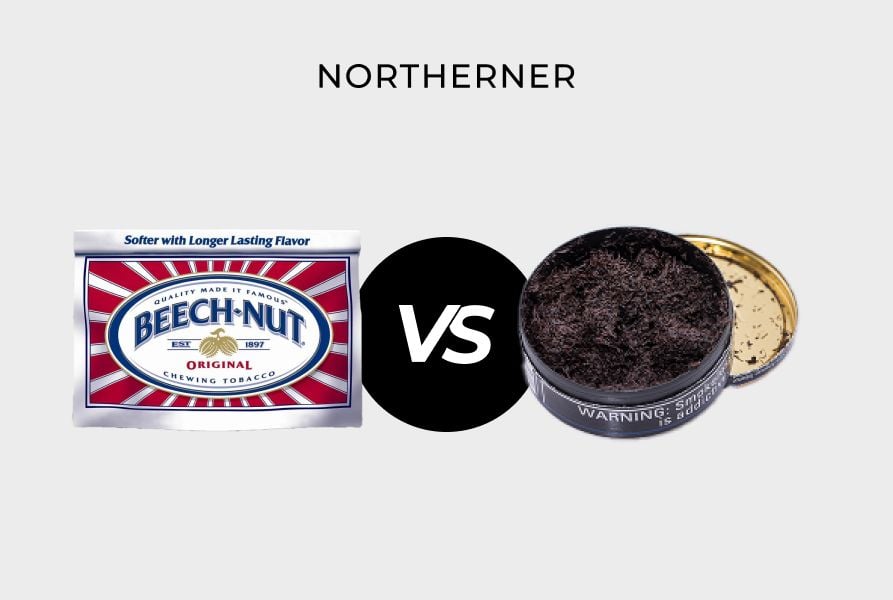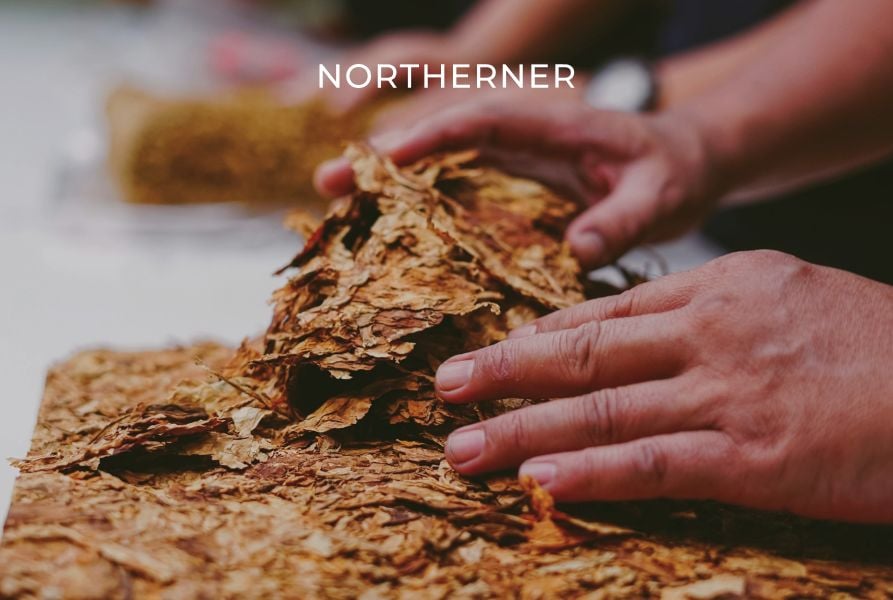Chewing Tobacco vs Dip: What's the Difference?
If you are familiar with your oral tobacco products, you are probably familiar with chewing tobacco and dip. They may seem similar, but there are some key differences to consider when comparing chewing tobacco vs dip tobacco. In this article, we'll dive into the variations, manufacturing processes, nicotine content, and factors to help you learn about the differences between the two and help you decide is chewing tobacco better than dip for you.
Understanding the Basic Differences Between Chew and Dip
Before diving into the key differences between dip and chew, it is good to get a quick rundown on what chewing tobacco and dip tobacco really are.
What is Chewing Tobacco?
Chewing tobacco, also known as chew or loose-leaf chew, is a type of smokeless tobacco product. It is typically made from cured and fermented tobacco leaves that are cut into loose strands or leaves. You place a portion of the chew in your mouth, typically between the cheek and gum, and chew it slowly to release the flavors and nicotine. Chewing tobacco comes in various flavors, such as mint, wintergreen, or even just classic tobacco.
What is Dip Tobacco?
Dip tobacco, commonly referred to as dip or moist snuff, is another form of smokeless tobacco. Dip tobacco is finely ground tobacco that is moist and packed tightly into small tins or pouches. You take a pinch or scoop of dip and place it between the lower lip or cheek and gum, allowing the tobacco juices to be absorbed through the lining of the mouth into the body. Dip tobacco is available in different flavors and strengths, catering to a variety of preferences.
The Differences Between Dip vs Chew
Off the bat, the products sound fairly similar, so what is the difference between chewing tobacco vs dip?
There are 8 main differences between dip vs chew we will look at:
1. Product Form
2. Using the Product
3. Moisture Content
4. Texture
5. Flavor
6. Packaging
7. Nicotine Release
8. Availability
The Differences Between Chewing Tobacco vs Dip: Product Form
The main difference between the form of chewing tobacco and dip tobacco lies in their physical presentation. In short, dip tobacco is finely ground tobacco that is often packed into pouches compared to chewing tobacco which consists of loose strands of dried tobacco leaves.
Chewing tobacco is composed of loose strands or leaves of tobacco that are meant to be chewed and kept in the mouth. On the other hand, dip tobacco is finely ground tobacco that is typically moist and packed into cans or pouches.
The Differences Between Chewing Tobacco vs Dip: Using the Product
The difference in form affects how you use them. Chewing tobacco is gently chewed and then placed between the cheek and gum after it is moistened, whereas dip tobacco is placed between the lip or cheek and gum for the tobacco juices to be absorbed. When using the product, it is good to note that dip tobacco usually ends up with more frequent spitting of tobacco juices. While chewing tobacco may also require you to spit, it may not be as frequent or necessary.
Want to learn more about how to use dip vs chewing tobacco? Here is a step by step guide for using dip vs chew.
Instructions for Using Dip Tobacco
Using dip tobacco is straight forward, and you can learn how to pack dip in 6 steps:
1. Prepare the can or pouch: Open the container of dip tobacco, whether it's a round can or a pouch.
2. Take a pinch of dip: Use your fingers to take a pinch or scoop of dip tobacco from the container. Start with a small amount, as you can always add more if desired.
3. Place it in your mouth: Position the pinch of dip tobacco between your lower lip and gum or between your cheek and gum. You can choose the side that feels most comfortable to you.
4. Hold it in place: Use your lip, cheek, and tongue to hold the dip tobacco in place. Allow the tobacco to rest comfortably between your lip/cheek and gum.
5. Absorb the juices: As you hold the dip tobacco in your mouth, the tobacco juices will be released. Avoid swallowing the juices and allow them to be absorbed by your gums.
6. Spit as needed: If you feel excess saliva or need to spit, do so into a spittoon, cup, or designated container (like a mudjug). Spitting helps manage the accumulation of tobacco juices.
Chewing Tobacco vs Dip: Moisture Content
One of the biggest differences between chewing tobacco and dip tobacco is the moisture levels of the product. Dip tobacco is typically moist and retains its moisture due to the additives used in the product, while chew tobacco may vary in moisture content but is generally less moist compared to dip.
Chewing Tobacco vs Dip: Texture
The texture is also important to showing the differences between chew vs dip. Dip tobacco has a finer texture due to the fact it is finely ground, while chew tobacco has a coarser texture due to the strands or leaves.
Chewing Tobacco vs Dip: Flavors
When looking at snuff vs chewing tobacco, it is good to look at the flavors available. Both products come in a range of similar flavors: most dip and chewing tobacco products have options available in wintergreen, mint and classic tobacco flavors. However, dip tobacco products tend to have more flavor options than chewing tobacco.
The Packaging of Chewing Tobacco vs Dip
The packaging of chewing tobacco vs dip tobacco is different to suit the unique requirements of dip vs chew.
Dip tobacco is commonly packaged in round cans or pouches, designed to hold the moist and finely ground tobacco. These containers are often compact and portable and look similar to snus cans (like the ones you find with General snus). On the other hand, chewing tobacco is typically sold in bags or tins, accommodating the loose strands or leaves of tobacco. These packages are designed to preserve the texture and quality of the chewing tobacco.
The Nicotine Release of Chewing Tobacco vs Dip
Both dip and chew tobacco provide nicotine release, but the absorption rate and how long it lasts may differ slightly due to differences in the tobacco cut, moisture content and also your personal usage habits.
Chewing tobacco, which is chewed and kept in the mouth, releases nicotine gradually as it is slowly absorbed through the oral mucosa. Dip tobacco, placed between the lip and gum, allows for a relatively quicker release of nicotine due to the finer grind and increased surface area for absorption. However, the actual nicotine release can still depend on factors like the specific product, your usage habits and also your own physiology.
The Availability of Chewing Tobacco vs Dip
The availability of dip and chew tobacco may vary based on regional preferences and regulations. Some areas may have a stronger preference for one form over the other, so in stores you may have more options of dip vs chewing tobacco or vice versa. If you also want to find out the differences between snus and dip, read our snus vs dip guide!








Login and Registration Form